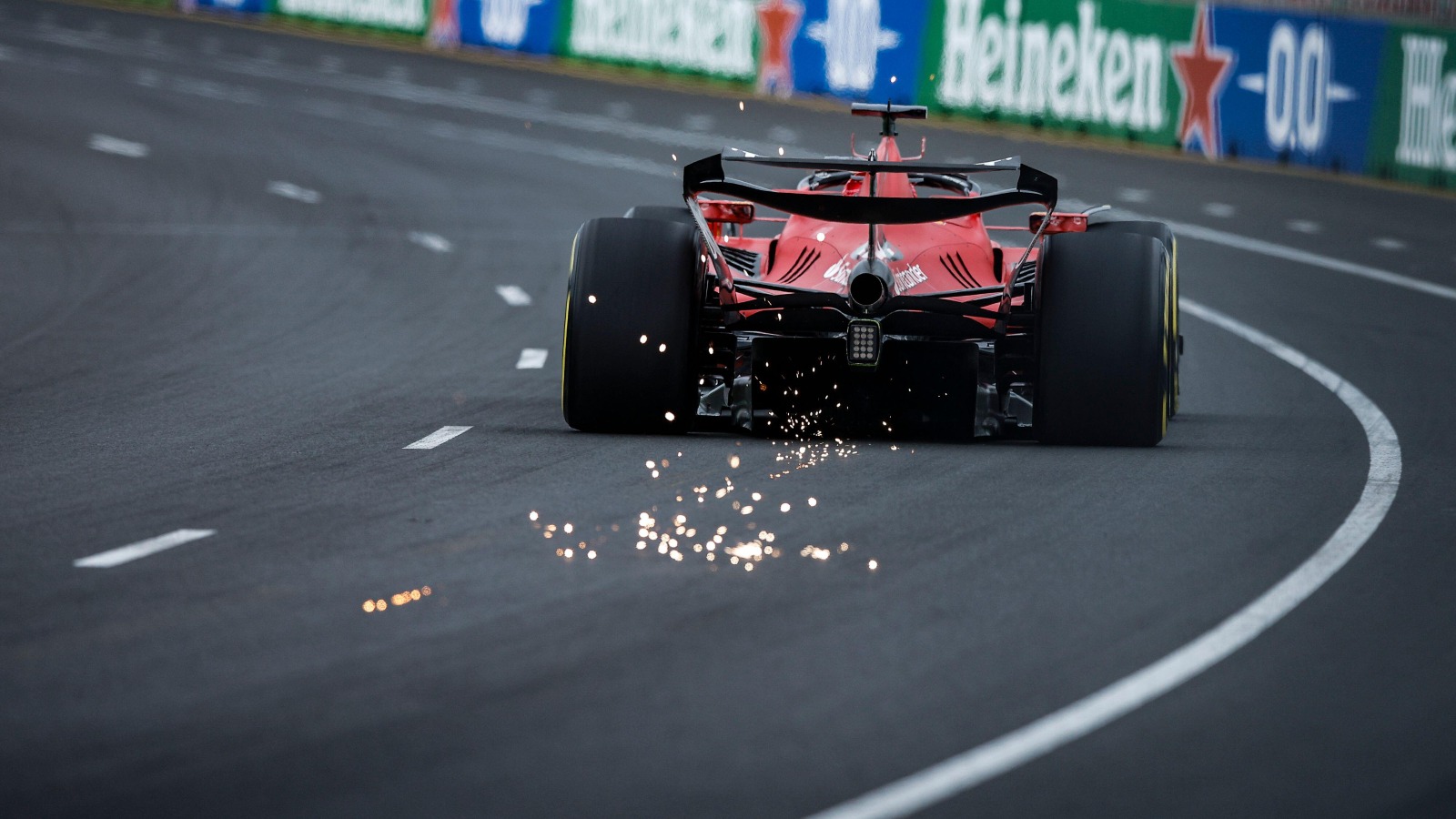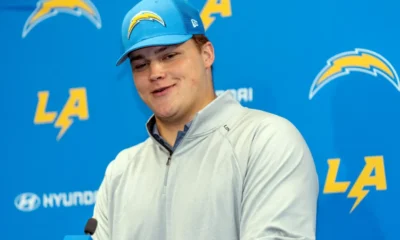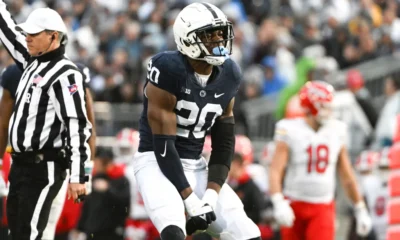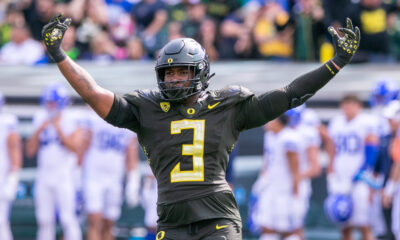
DRS isn’t a concept that has always been used in Formula One. DRS was introduced to F1 back in 2011 and has never been discontinued since. Over the years, DRS has become very crucial to overtaking. It is a driver-controlled device aimed at aiding overtaking and increasing the chances of wheel-to-wheel racing in the sport.
DRS is not only used in Formula 1. It is also used in Formula 2 and Formula 3.
Why was DRS introduced?
Simply put, F1 is a racing sport, and as expected, overtaking is a big part of that. Anything that can help assist the process of overtaking is deemed useful to the engineers and drivers.
Formula 1 is an innovative sport. Engineers have always been working hard and diligently to produce the fastest racing cars possible – within the limits of the regulations obviously. Faster cars are what we all want, essentially. But this can cause problems, and has.
As the cars got faster over the years, ‘dirty air’ became a problem. Dirty air occurs when two F1 cars are following each other. As per the laws of physics, the car behind will face turbulent air that reduces its aerodynamic performance and downforce. This makes it hard for the car to follow, as the car becomes unbalanced, which can also affect the integrity of the tyres. The engine cooling system is also affected by this. What this causes is drivers who were hoping for an overtaking opportunity having to pull back, give their car some time in clean air to recuperate and build up energy for the next overtaking opportunity.
Dirty air became so much of a problem, that most overtakes happened in the pits, rather than on the track. This also came into play more often because F1 cars had to refuel during races. Strategic pitstops were often used in order to gain positions. What happened a lot is what we call undercutting in F1. This is when teams pit a chasing car to try and jump ahead when the leading rival eventually stops. It is still a strategy used in modern F1, but not as a main overtaking strategy. In the late 2000s, undercutting became the favourite mode of overtaking, significantly decreasing on-track overtaking, to the dismay of many.
Refuelling was banned after the 2009 season, which did help reduce the number of overtakes made due to pitstops, but the problem of dirty air was still very much there.
This led to the introduction of DRS in 2011, an innovation that is both loved and hated. It must be said that DRS was a successful implementation. On-track overtaking increased by 27%. Between 2017 and 2021, the sport averaged 4o overtakes per race. In 2022, with the new regulations, there was an increase of this by about 20% more. However, in 2023, overtakes have decreased significantly as engineers continue to understand the regulations more and find loopholes to make the cars faster, thus bringing back the problem of dirty air.
How does DRS work?
We’ve talked about why DRS was brought into F1 and how it has helped. But how does the driver-enabled system actually work?
In full, DRS is ‘Drag Reduction System’. As the name suggests, it is there to reduce drag to make the following car go faster and hence make overtaking their opponent easier.
If you look at an F1 car on track, the rear wing ‘opens and closes’ at some points during a session. DRS is the movable flap that is part of the rear wing.
That flap doesn’t open and close at random times during a session, instead, the driver chooses when to use it. However, the driver is allowed to use DRS only on specific parts of the track. These are called DRS zones. They are usually found on the longest straights of each track. Some tracks like Suzuka and Monaco just have one DRS zone. Most circuits including Zaandvort and COTA have two DRS zones whilst the majority of the tracks including the Miami Grand Prix have three DRS zones. Albert Park in Melbourne is the only one that has four DRS zones.
There is another catch though. During a race, a driver cannot activate DRS every single time they are in a DRS zone. That would be far too easy. Just before every DRS zone, there is a DRS detection zone. At this detection point, electronic timing loops in the track surface measure the distance between the two cars. If by the time a driver gets to the detection zone and is within one second of the car ahead, the driver will be able to use DRS in the DRS zone. Should the driver be more than one second behind the car ahead, the driver will not be able to access DRS.
We have already established that it is a driver-enabled device, and therefore not automatic. When the driver wants to use DRS, they have to press a button on their steering wheel that is specifically for DRS usage. A driver will know that DRS is available to them by dash lights on their steering wheels. When the driver presses the DRS button, the flap in the rear wing opens. DRS automatically deactivates and the rear wings close whenever the brake pedal is applied or when the driver lifts off the accelerator. As for the car in front, teams sometimes warn their drivers on the team radio that a rival is dangerously close.
This doesn’t sound too complicated, but it actually is. There is more to it. Drivers can choose to close the wing before braking into a corner due to concerns about instability during corner entry. To complicate things, pressing the button too early means it will not open at the desired point, leading to a delay before the wing can then be opened. Therefore, the timing is crucial. It is another reason why F1 drivers do heavy training for their reflexes. They need to react at the perfect moment.
Also, the drivers do not actually have to activate DRS if running within one second of another car. As racing drivers, they have quick thinking and this decision is often strategic. The driver could either use DRS to get even closer and not overtake, but instead overtake further into the lap. Or, the driver could decide to wait out another DRS zone, or another part of the track where they earlier learnt they’d have the upper hand and make a move for the overtake.
DRS can be deactivated at certain times by the FIA. No driver can access it even if they press the DRS button. DRS cannot be used on the first two laps of a race or after standing or rolling restarts following safety car or red flag periods. It is also not available when the track is wet. A car going off track or debris on the track can also lead to DRS being temporarily deactivated in a specific zone. When conditions are later deemed safe, Race Control activate DRS.
In all Qualifying and Practice sessions, DRS is always available to use – unless the track is deemed unsafe. But just like in races, drivers can only enable DRS in the respective DRS zones.
Who are the losers of DRS?
The defending driver is always at risk whenever the driver behind them is close enough to use DRS. The defending driver’s job is to try and pull away from the car behind them as much as they possibly can before they reach a detection zone.
Defending drivers can activate DRS too. But this is only if they are within one second of a car in front. This creates a phenomenon known as the ‘DRS train’. DRS trains often reduce the benefits of DRS. This is because it depletes the impact of a top speed boost since many cars are all together gaining. The gaps between the cars usually then remain stable, making the chance of an overtake harder, despite having DRS enabled.
DRS failure is sometimes possible, and this can affect anyone on the grid. Of course if this happens, a driver’s race can be completely ruined if the system doesn’t get back up at nay point during the race.
Related

Featured Articles
-


Features
/ 5 hours agoWhy Joe Alt Is the Perfect Pick for the LA Chargers
Marvin Harrison Jr. Malik Nabers. Rome Odunze. I’ve heard these names in reference to...
-
MMA
/ 1 day agoUFC 300: Holloway Sends His Blessings
When Max Holloway decisively lost his third fight against Alexander Volkanovski, his championship aspirations...
By Brandon Li -


College Football
/ 2 days agoNFL Draft 2024 Scouting Report: Adisa Isaac, Edge, Penn State – Baltimore Ravens
Drafted by: Baltimore Ravens Height: 6’4” Weight: 247 Arm Length: 33 ⅞ ...
-


College Football
/ 2 days agoNFL Draft 2024 Scouting Report: Brandon Dorlus, DL, Oregon – Atlanta Falcons
Drafted by: Atlanta Falcons Height: 6’3” Weight: 283 Arm Length: 33 ¼ ...





